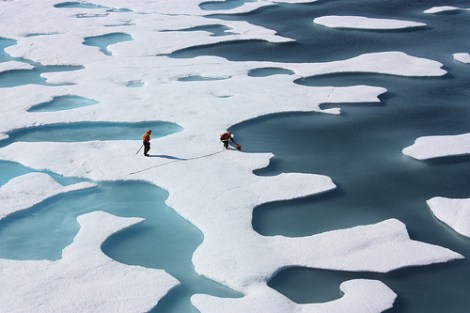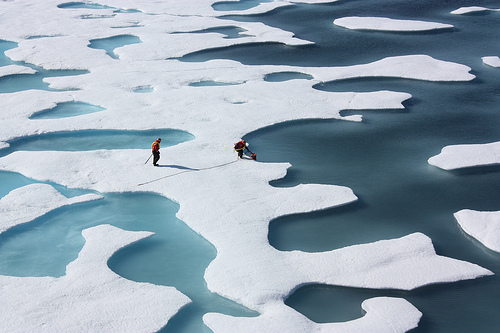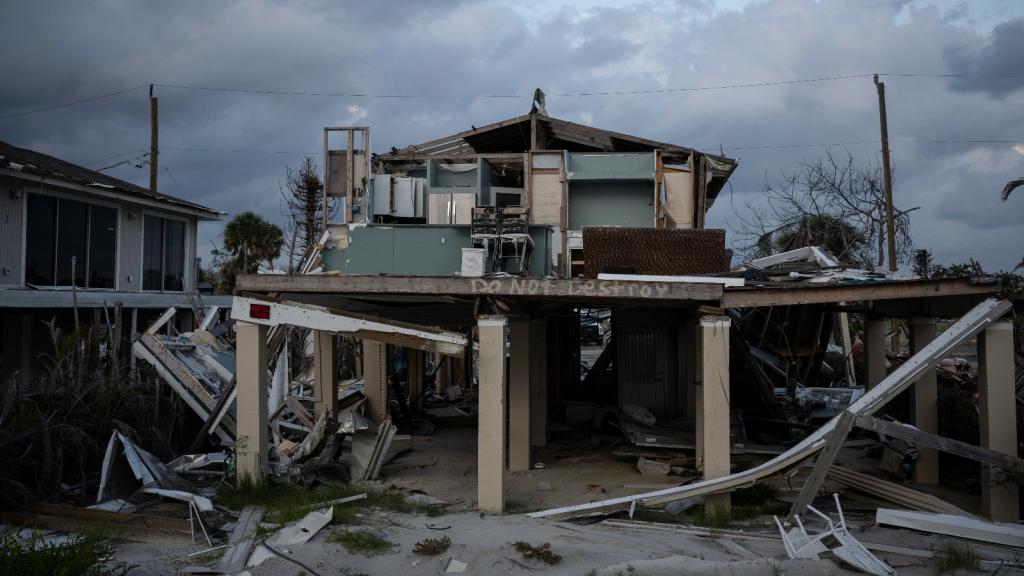It’s time once again for your regular update on the melting ice in the Arctic, where temperatures are rising faster than anywhere else on earth!
By 2040, the melt will be so intense that some ships could be able to navigate straight across the North Pole during the summer months, according to new research out of UCLA, published today in Proceedings of the National Academy of Sciences. It’s bad news for people who care about a livable climate, but good news for shipping companies that want to spread cheap goods far and wide.

NASAPonds on the surface of Arctic ice.
Currently, the Northwest Passage is inaccessible for normal vessels, and has only been transited a handful of times by reinforced ice-breaking ships. Under both of the [climate] scenarios [the researchers studied], though, it becomes navigable to Polar Class 6 ships every summer. At times, it could even be open to unreinforced vessels as well—the study shows that, when multiple simulations were run in both medium-low and high levels of greenhouse gas emissions, open sailing was possible for 50 to 60 percent of the years studied.
Finally, the straight shot over the North Pole—a route that would currently take would-be captains through a sheet of ice as much as 65 feet thick in areas—could also become possible for Polar Class 6 ships in both scenarios, at least in warmer years. “Nobody’s ever talked about shipping over the top of the North Pole,” [UCLA researcher Laurence] Smith said in a press statement. “This is an entirely unexpected possibility.”
These kinds of reports predicting the end-all of Arctic sea ice have been coming out at a fast pace recently, right in line with the Arctic’s temps. Will the ice be gone by 2016, 2020, 2040? Unfortunately, we’ll probably find out sooner than we’d like.



